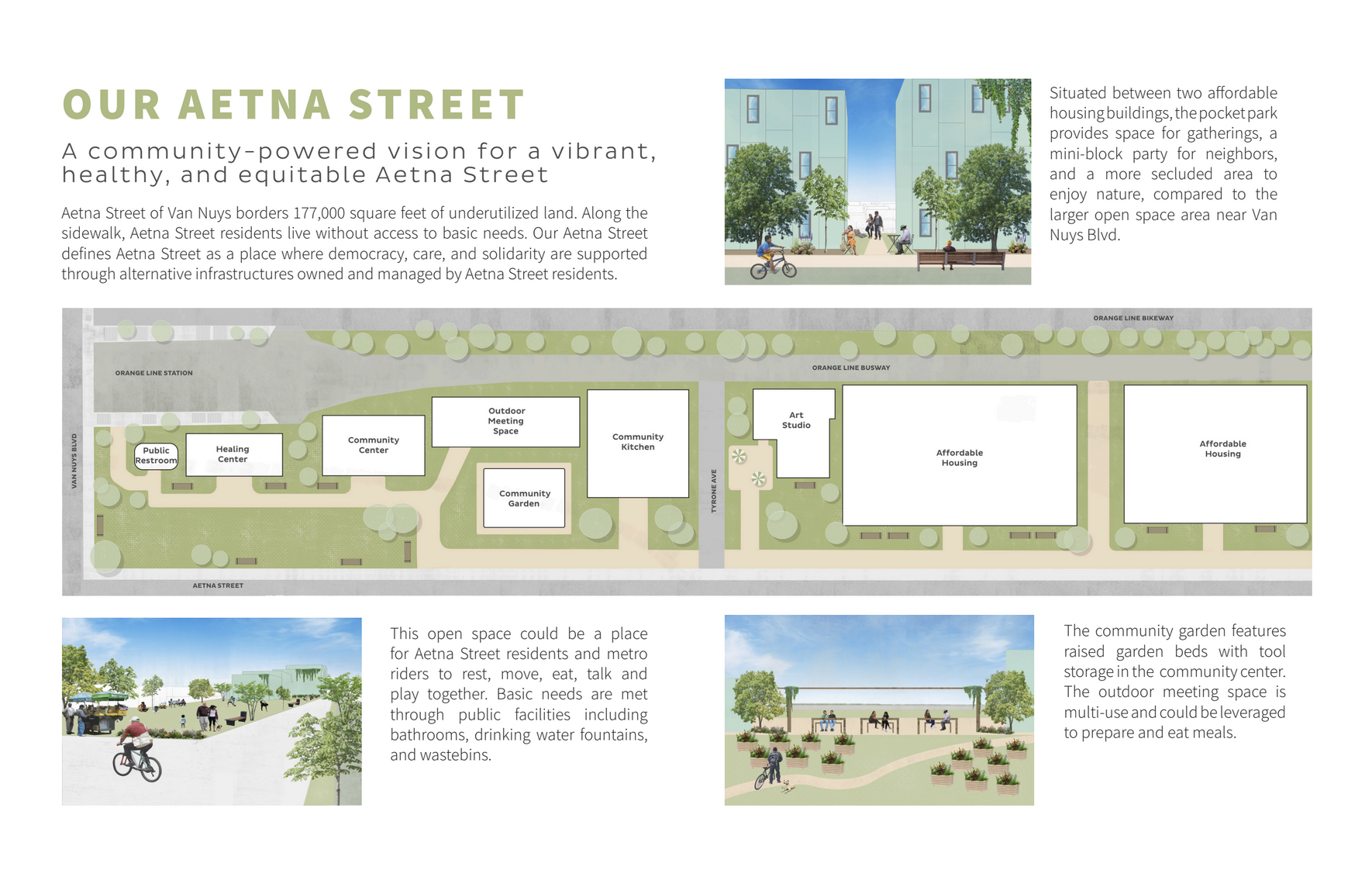
Histories of resilience seep through the concrete scab beneath our feet. Testimonies of Tongva people, past and present, remind us of uncontained lands and bodies flowing free. Fault lines of the original dispossession rumble; carrying the weight of stolen land, water, and ways of life. Traditional territories were once eroded by waves of forced relocation and assimilation - weapons of mass erasure.
Today, modern versions of those tactics of erasure are waged against unhoused communities that have been criminalized, displaced, and disappeared. This community, here on Aetna, refuses to be erased and demands that their voices be heard. In the face of anti-camping laws, policies of banishment like 41.18, and the dehumanizing shuffle from street to shelter and back, the residents of these sidewalks are fighting for both their right to the city and the right to their own survival.
It is crucial to recognize that city planning processes are designed to exclude the needs, voices and histories of the very communities they are meant to serve; particularly unhoused communities. These processes manufacture and perpetuate the idea of scarcity by commodifying and restricting access to basic resources like housing and space. So long as profits are prioritized over the right to basic needs in the planning process, every block will be a frontline.
Here on Aetna, 177,000 square feet of land sits vacant, sharing walls with neighbors living without access to basic things like toilets, showers and laundry. Currently, this lot is storing overstock luxury vehicles. Next door, the Bridge Home Shelter has 70 beds and an operating cost of $1.3M per year. They preach the same sermon, "there is not enough here for everyone."
Challenging contemporary planning processes and putting collaborative community planning into practice, we organized a visioning night for Aetna residents to share ideas on how the two vacant metro owned lots on the corner of Tyrone Avenue and Aetna Street could be used to their benefit. These are the five priorities identified:
- Affordable Housing
- Community Center
- Community Kitchen and Food Garden
- Studio Space
- Healing Center and Open Space
This planning process goes hand-in-hand with demands written by the Inside Starving Coalition calling on Mayor Bass to make critical changes to the Inside Safe program. We are inspired by other movements fighting for community self-determination including local movements like Reclaiming Our Homes and Hillside Villa, in addition to larger movements like the landback movement and the land trust movement.
A core part of this process is creating spaces that nourish our well-being before we can come together to plan. Aetna community residents and allies planned and hosted a healing night of food, music, art, and joy on the block so that folks could take a moment of pause away from the stress of everyday life. Healing night also made space for residents on the block to strengthen community bonds.
Collaborative and participatory alternatives to city planning processes beg the questions: “What would it look like if the city actually cared about the folks who live on this block? What are their needs and priorities based on the experiences they have had?” The community driven planning process we worked on in this collaborative is an open critique of the broken trust and broken promises of The City of LA, Los Angeles Homeless Services Authority (LAHSA), and The Salvation Army when it comes to providing resources and services. There is knowledge and there is power on the block, and we can come together and use that strength to build communities that are made for us and made by us.
These are the ideas that live here in this community. We want housing, services, parks, and places to heal. We want the freedom to choose what’s best for us, we want to have a voice in the decisions that are made about us. Practicing alternative types of planning is one step towards building a more just world, and one step closer to caring better for each other and the land.
